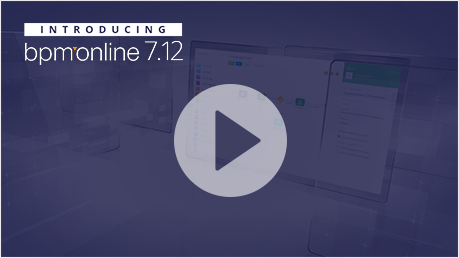The [Read data] process item (Fig. 166) is used to prepare data that can be used by other process items. You can select the needed object record and calculate the total number of records, the sum, average value, and the maximum or minimum value of one of the number columns.

The calculated data can be used as parameter values by other process items. For example, the selected record can be opened for editing or used for creating connected records. The number of records can be used in further calculations.
Parameters
Parameters of the [Read data] user task are specified in the card (Fig. 167) that opens when the item is added to a process. You can also open this card by double-clicking the corresponding process item.
Fig. 167 [Read data] item parameter card

In the [Caption] field, enter the caption of the process item that will be displayed in the diagram.
In the [Read from object] field, specify the object whose records must be received. This is a required field.
Select the [Number of records] checkbox to calculate the number of records that meet the filter conditions. In this case, the resulting data is the number of records. For example, you can determine the number of accounts of the “Client” type that were registered after a certain date.
Select the [Function] checkbox if the process item must calculate the sum of the number column, the minimum, maximum or average value of this column. Only the records that meet the filter conditions will be calculated. The resulting data is a calculated number, for example, the average activity duration specified in minutes.
Note
A maximum, minimum or average value can be calculated for the “Date”, “Date/Time” columns.
Select the [First record from selected by specified record sorting] checkbox to select one record from the selected object. The field below this checkbox displays the column titles that can be used to sort the records. The process will select the first record in the list in accordance with the specified sorting order. In this case, the resulting data is the selected record with all its fields. For example, the process can select a specific account, contact or activity. Data from the selected record can be used to fill in the parameters of other process item.
Note
The record sorting and column adding are performed in a standard way in the list of selected records. For example, you can sort records by several columns.
[Read first] — select the checkbox to read specified number of records. If the checkbox is not selected, the item will select all records that correspond to the filter specified in the [Object must comply with condition] area. Enter the number of records to select in the field next to the [Read first] checkbox.
The process will select the first record of the list in accordance with the specified sorting order. In this case, the resulting data is the selected record with all its fields. For example, the process can select a specific account, contact or activity. Data from the selected record can be used to fill in the parameters of other process item.
[Read selected columns] — select the checkbox to read data only from certain columns. Click the [Indicate columns to read] to select the columns. If you do not select the [Read selected columns] checkbox, the process will read data from all columns for the seleced records.
Use the [Object Must Comply with Condition] filter area to specify the conditions for the selected records.
Note
More information about sorting records and column setup can be found in User Guide.






